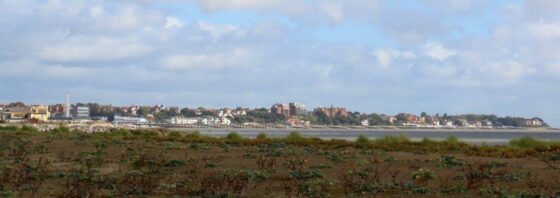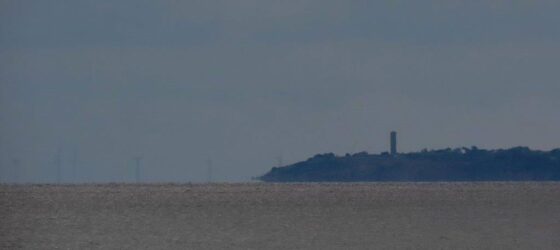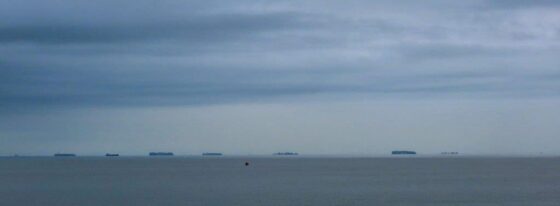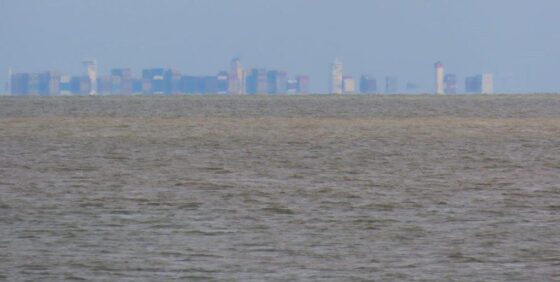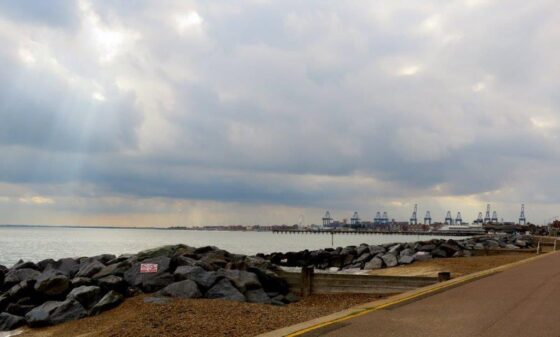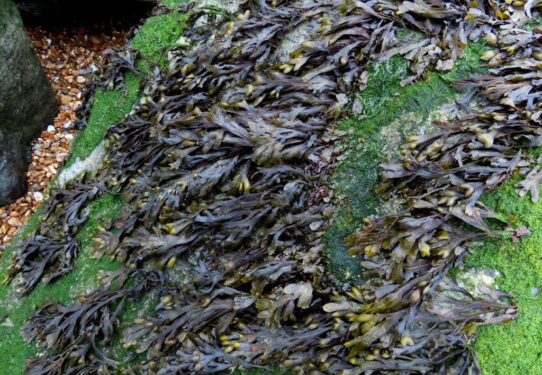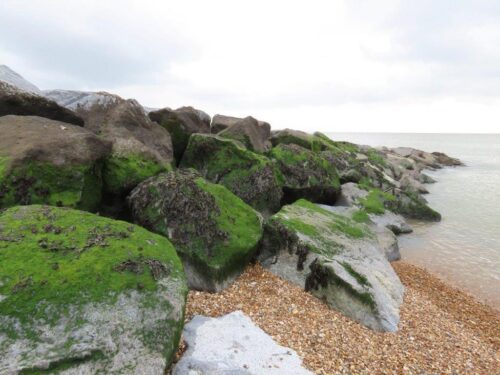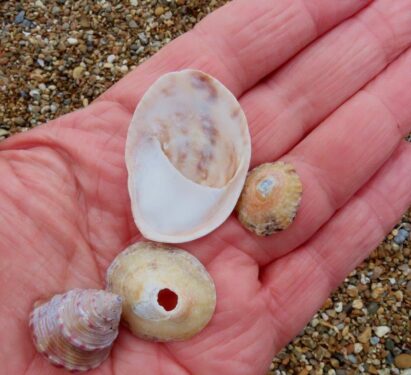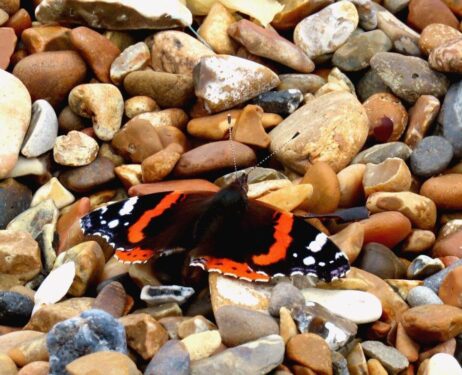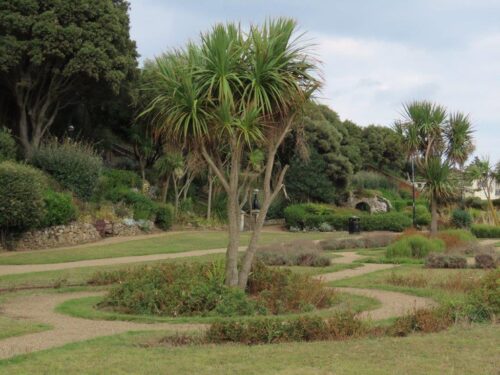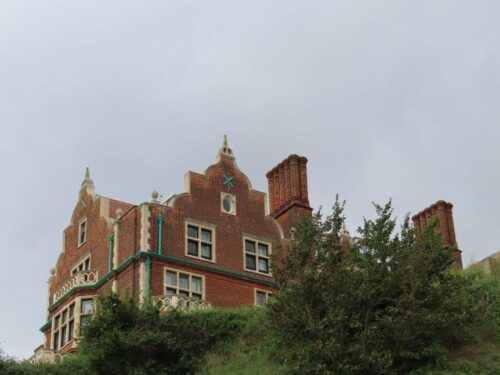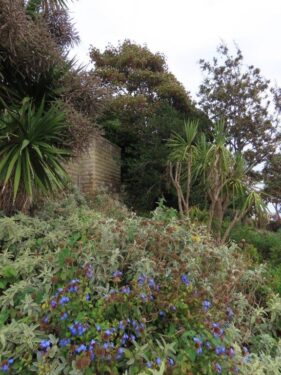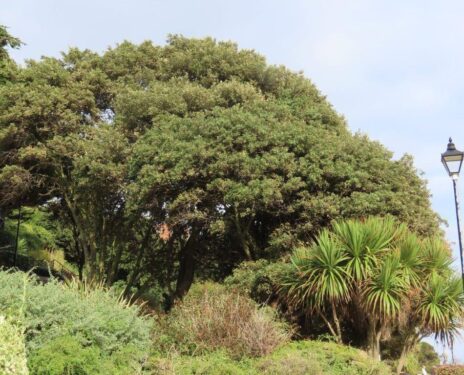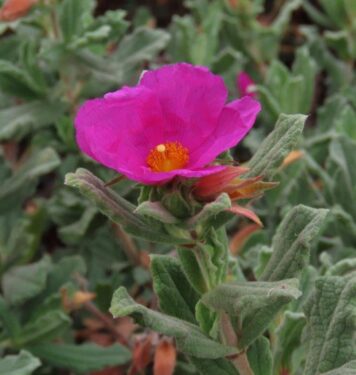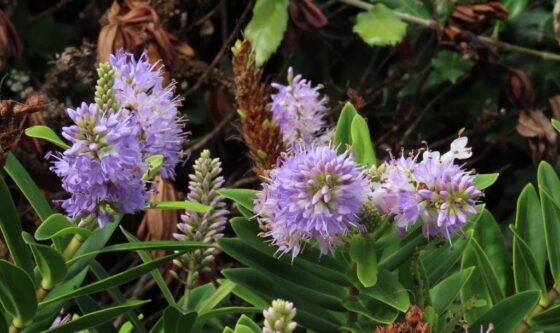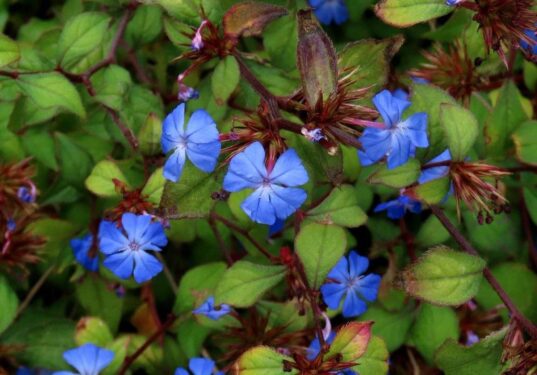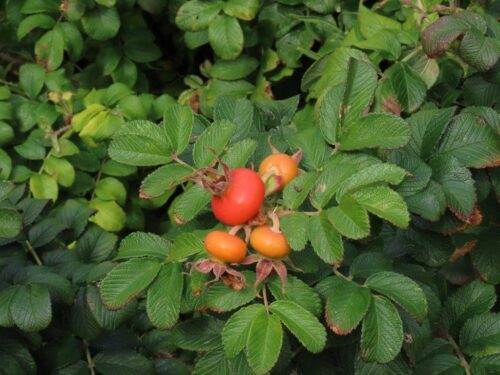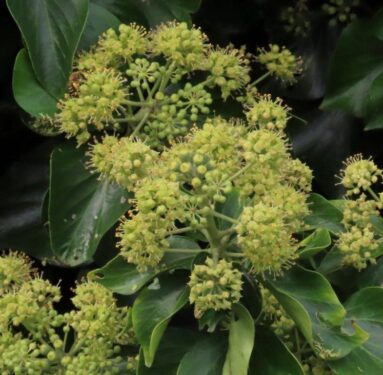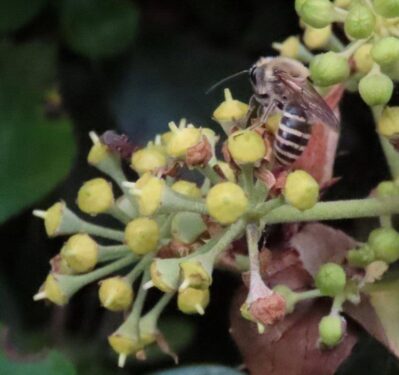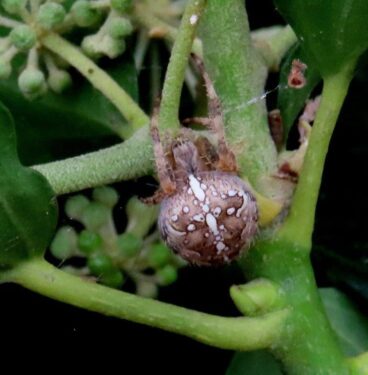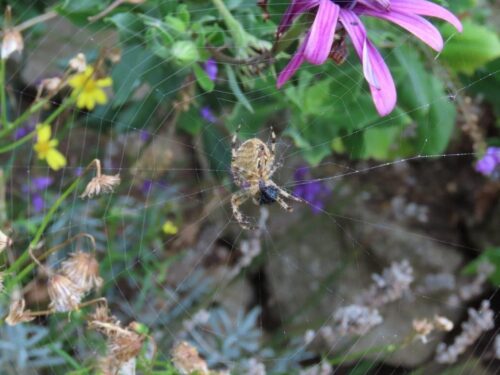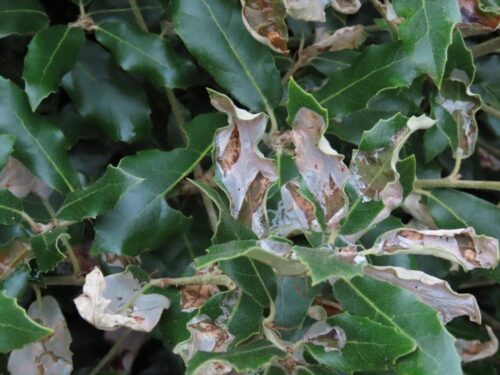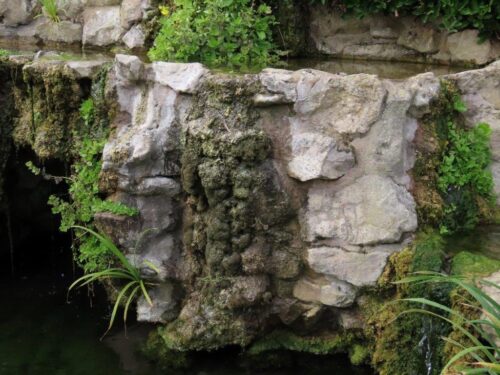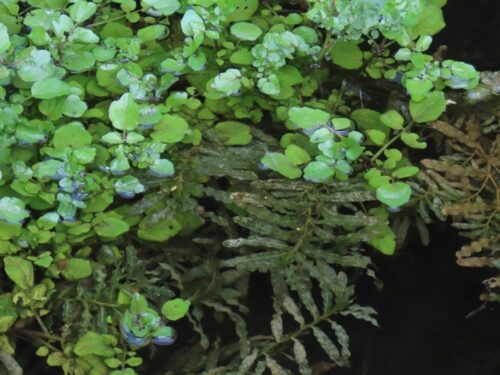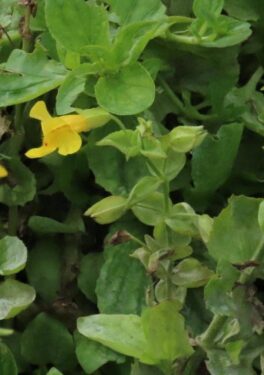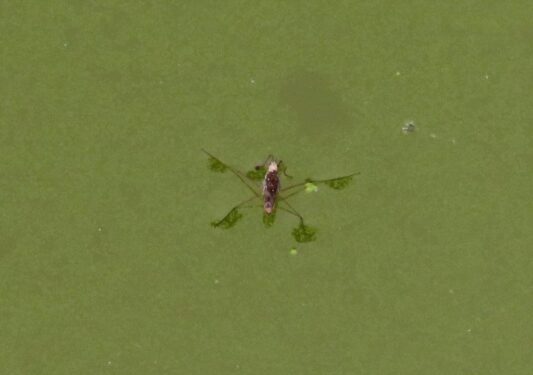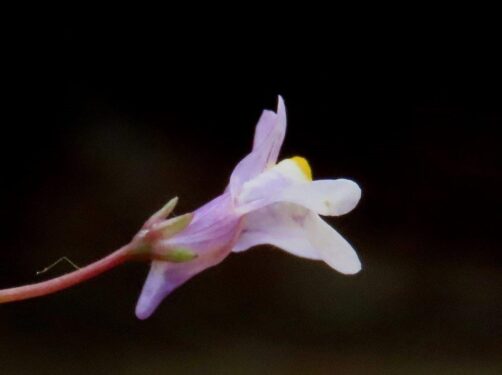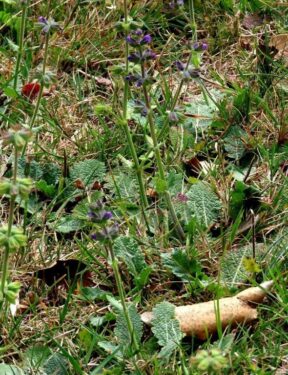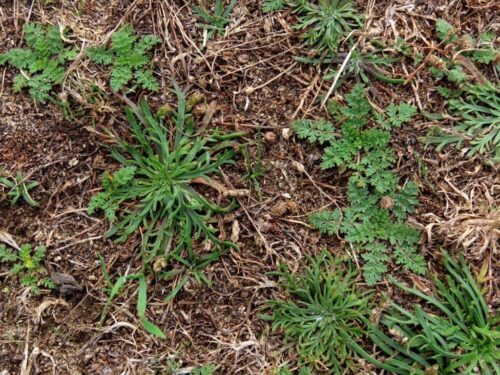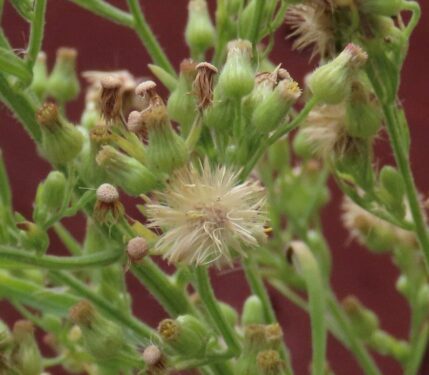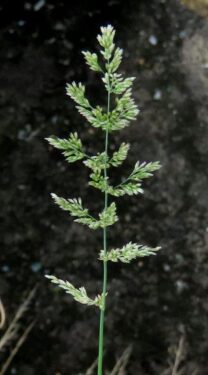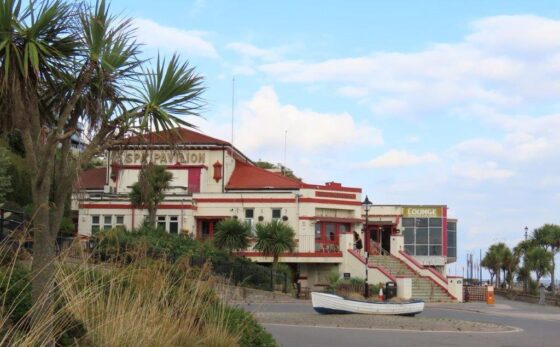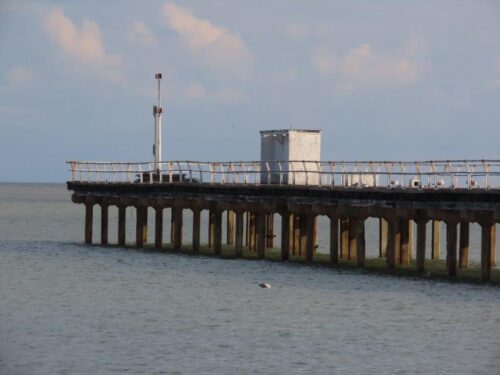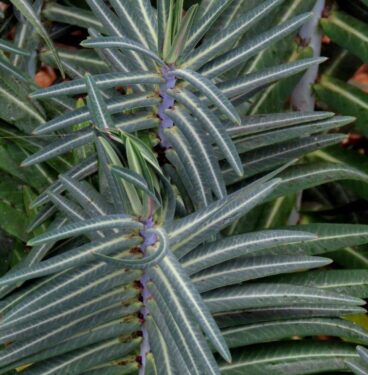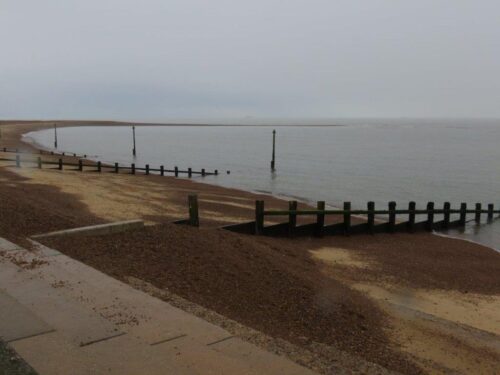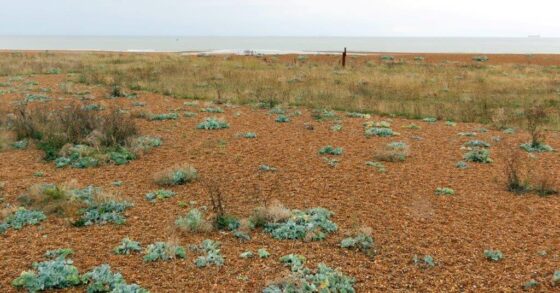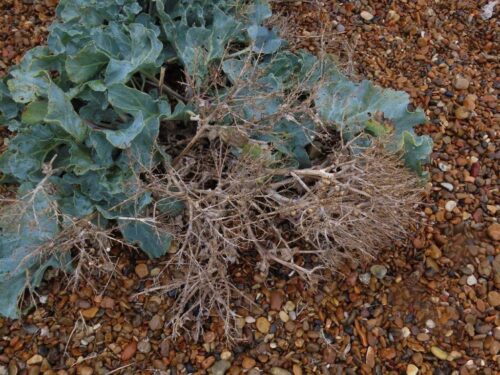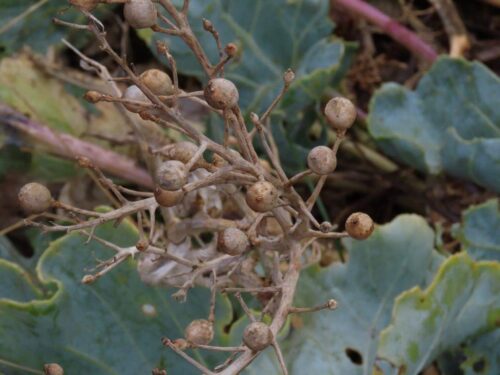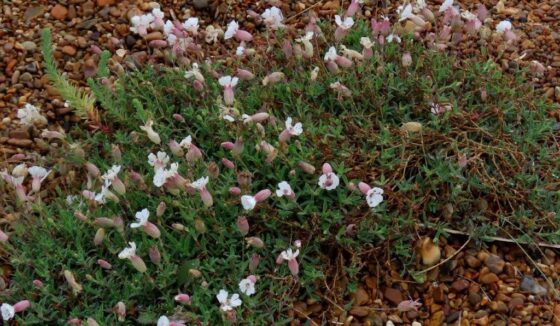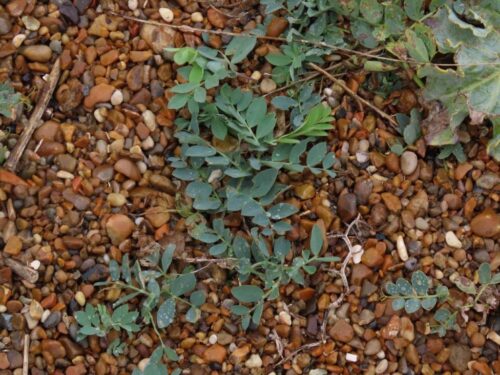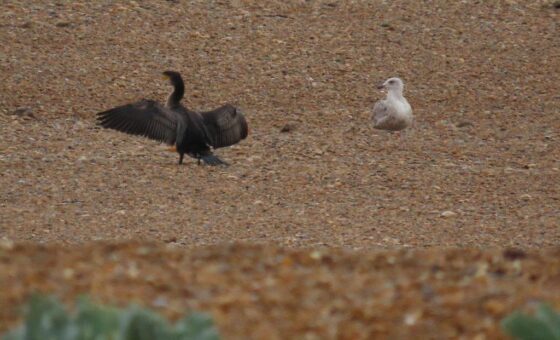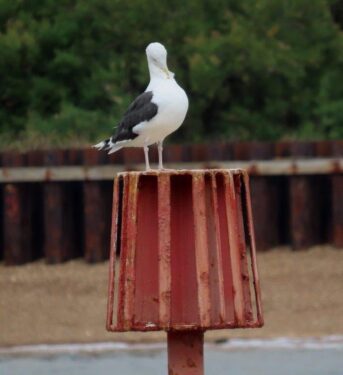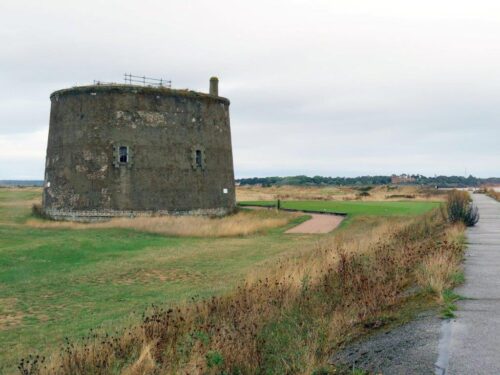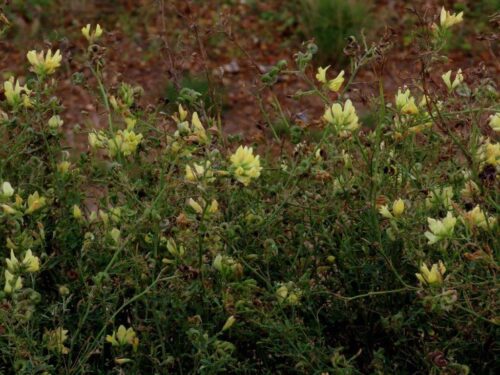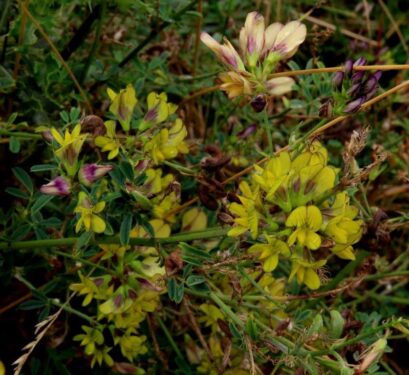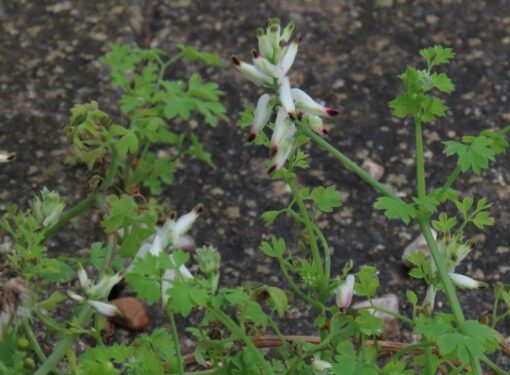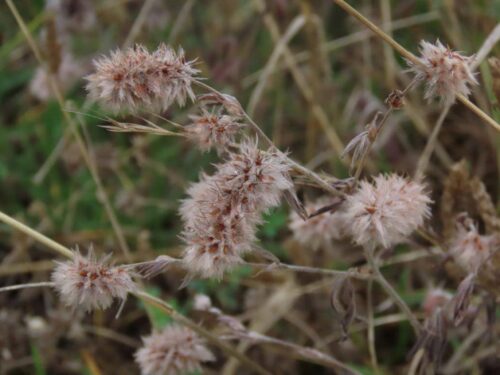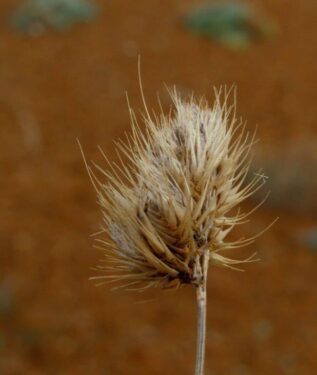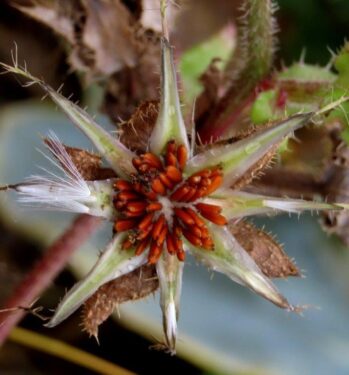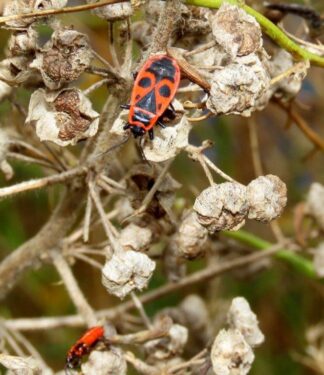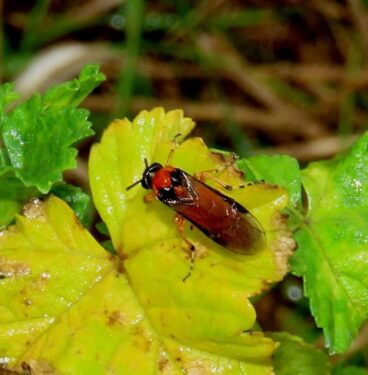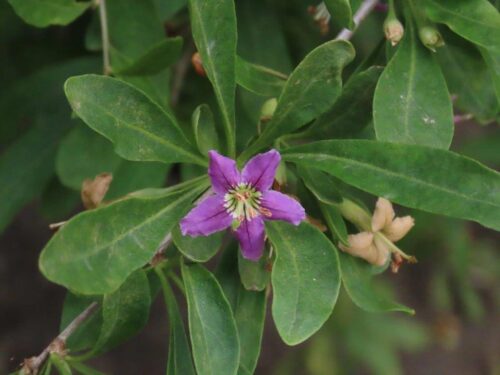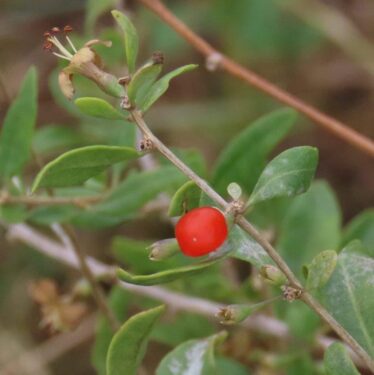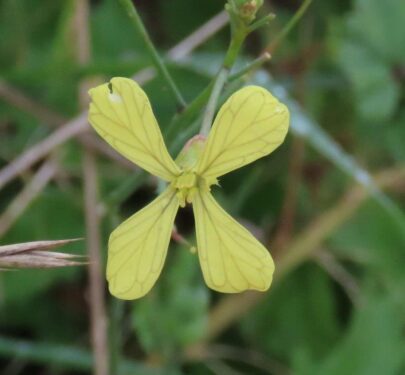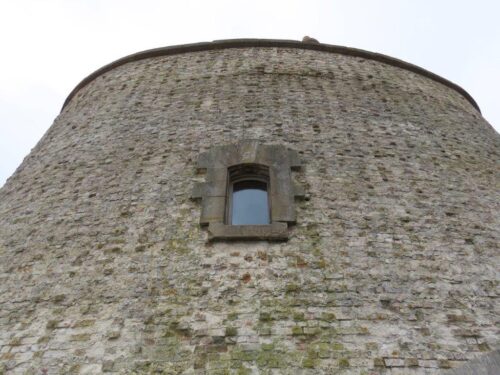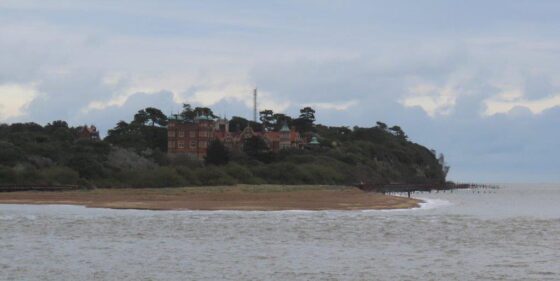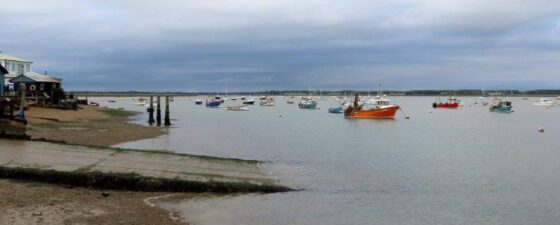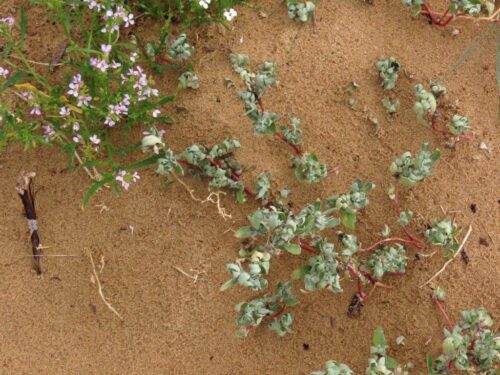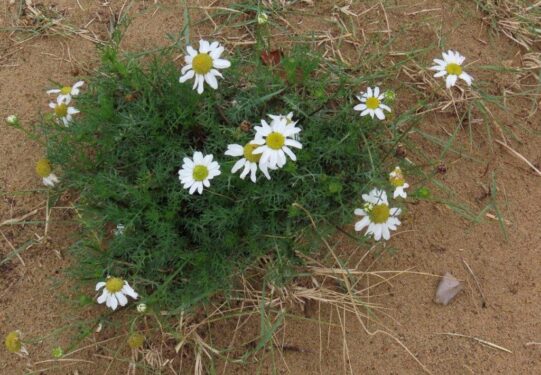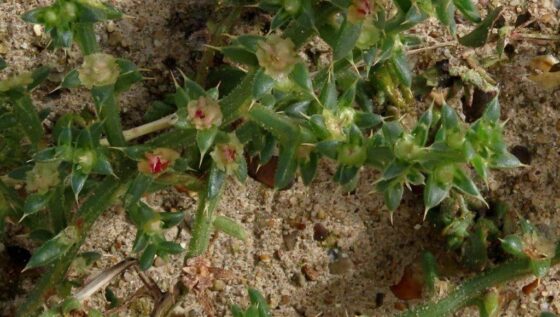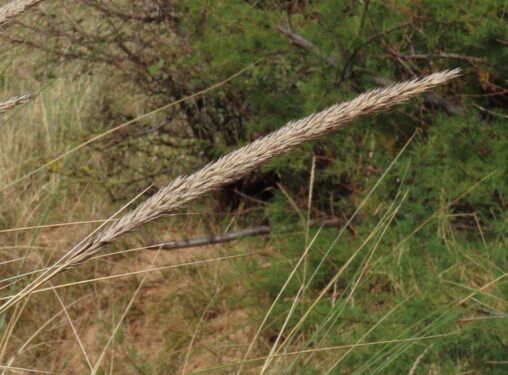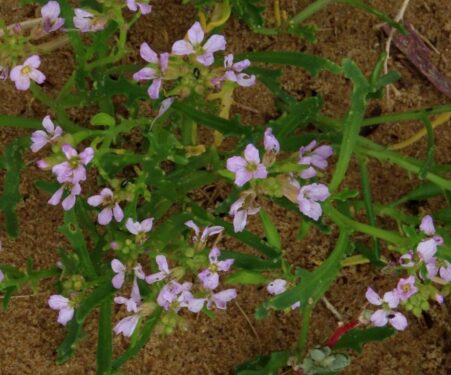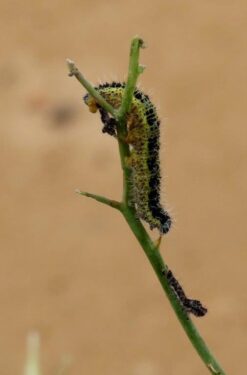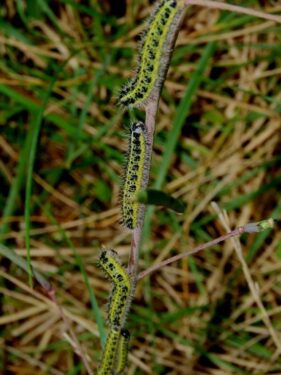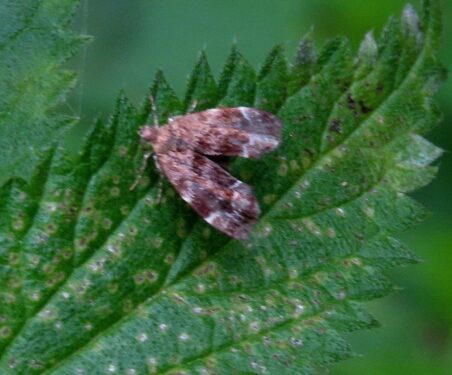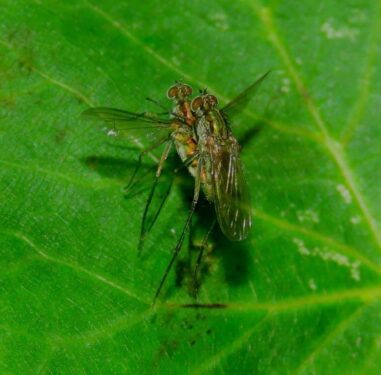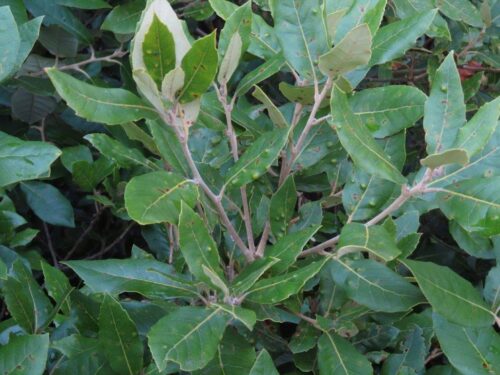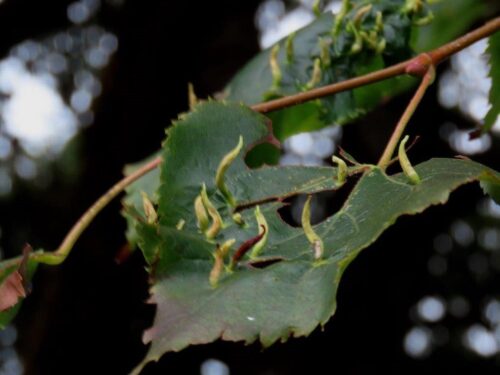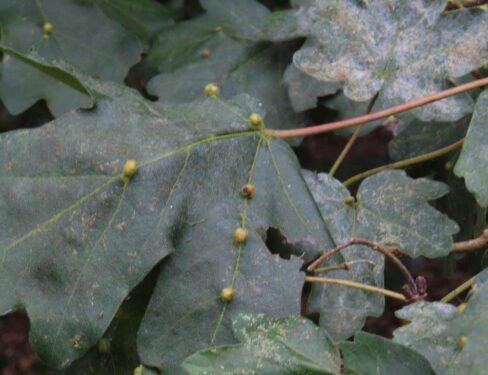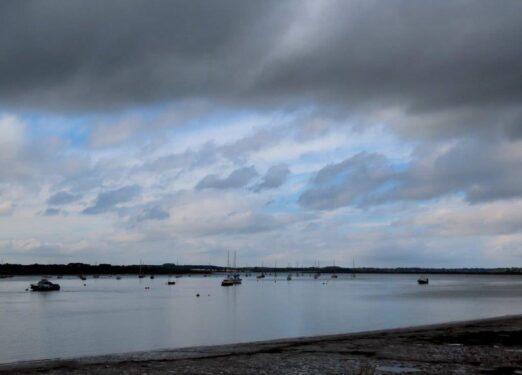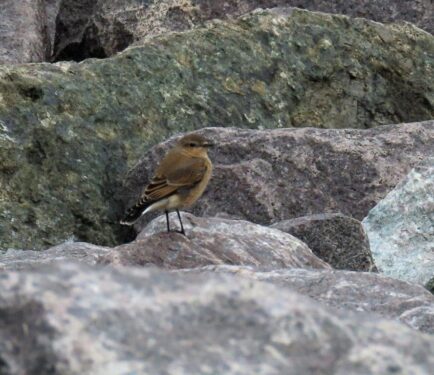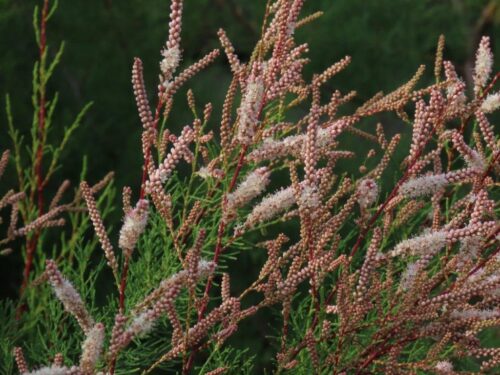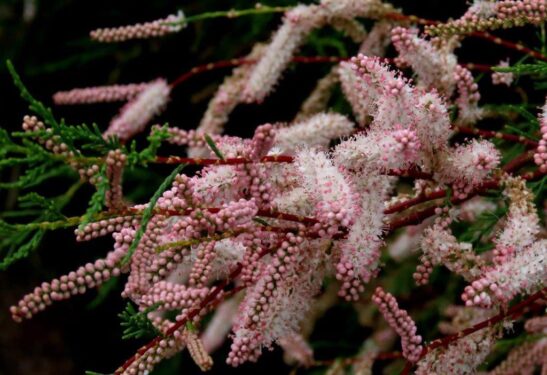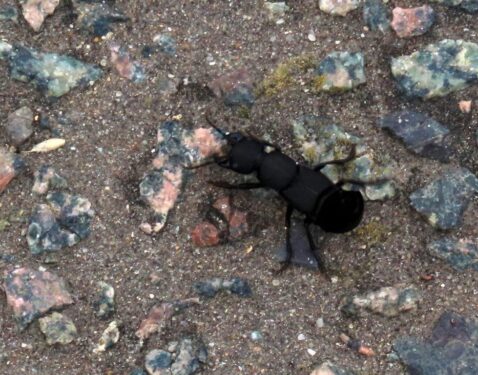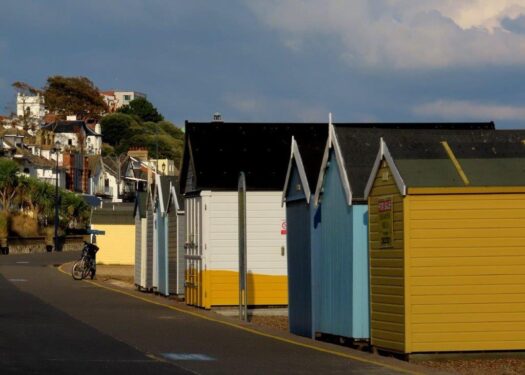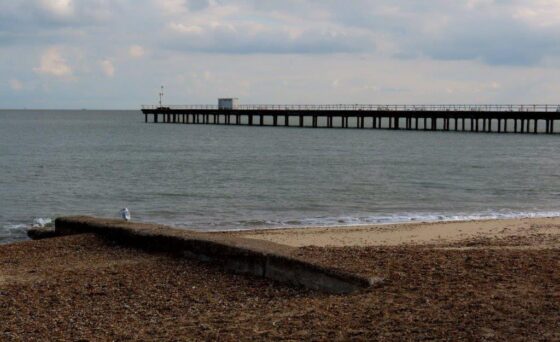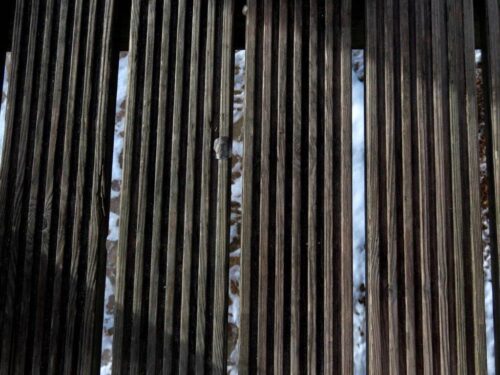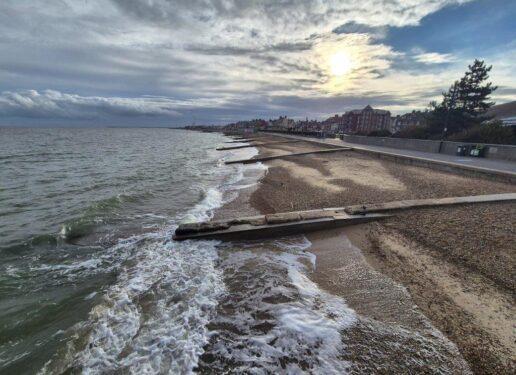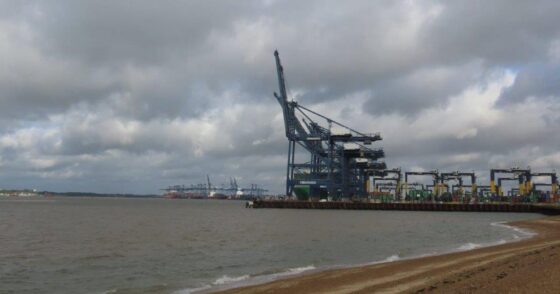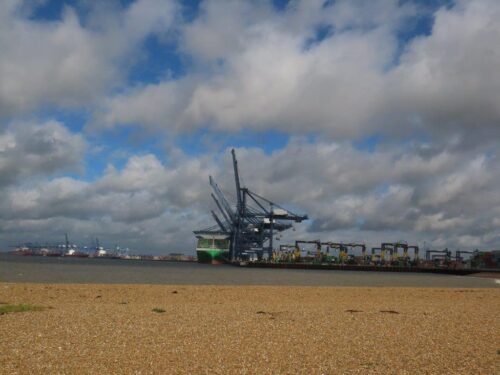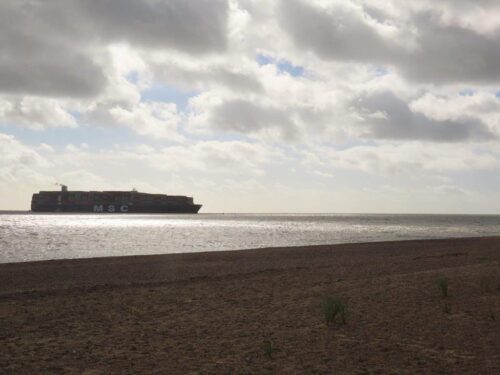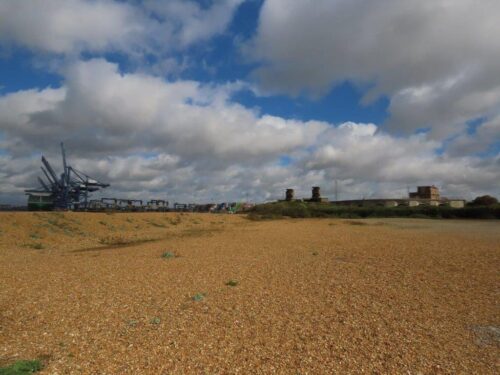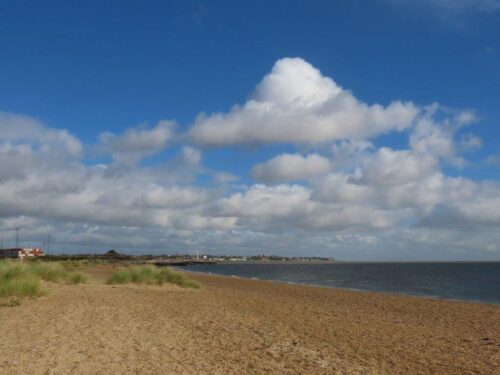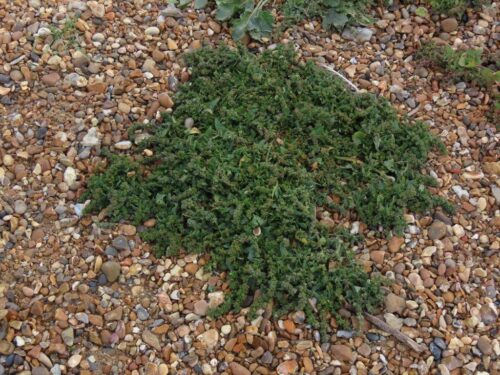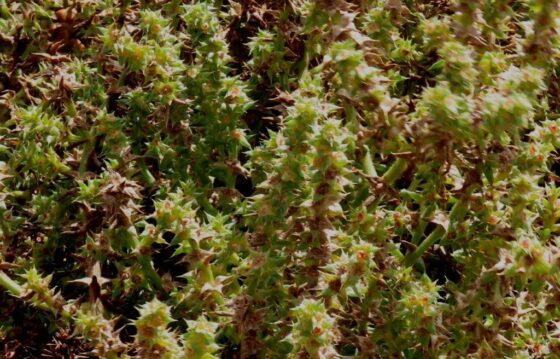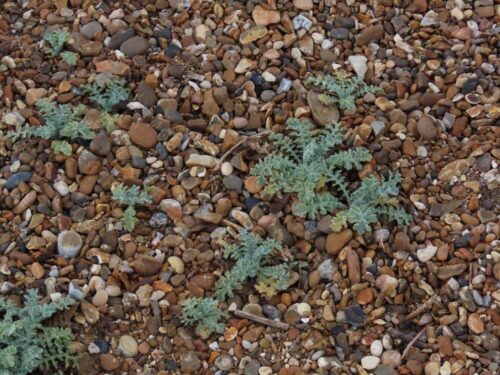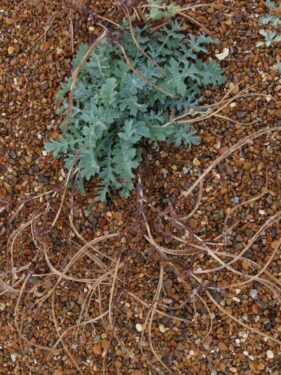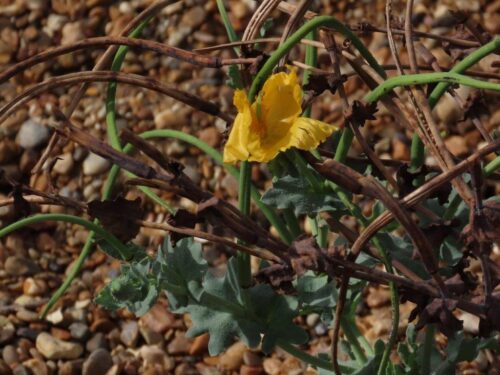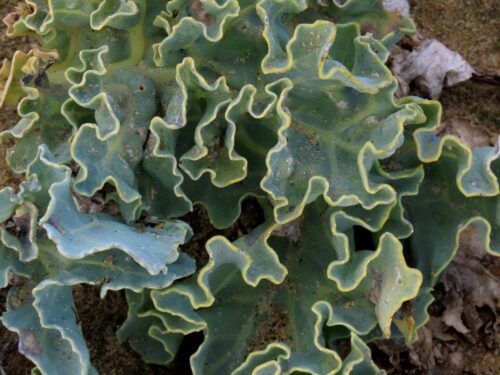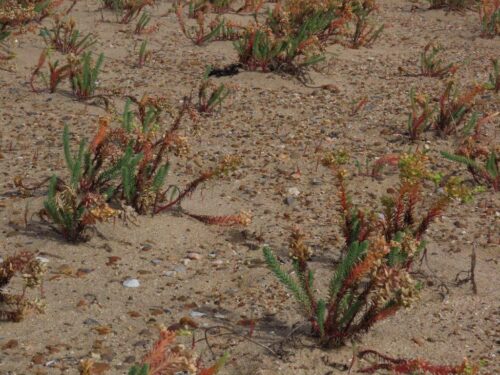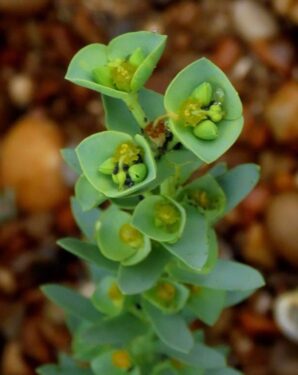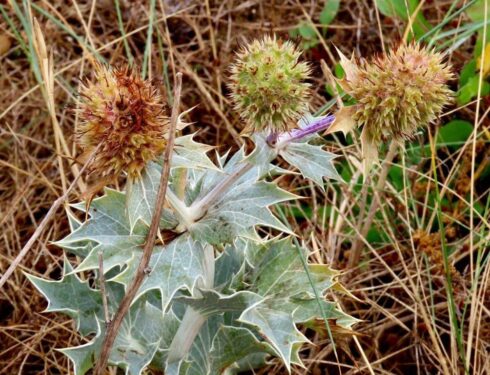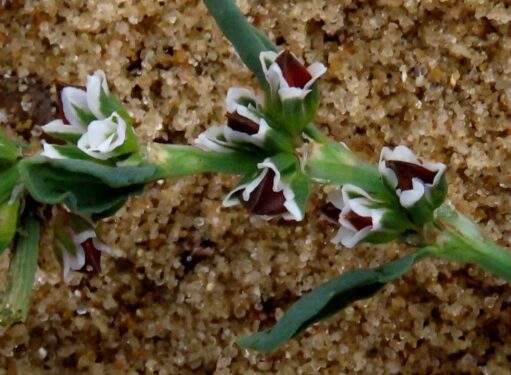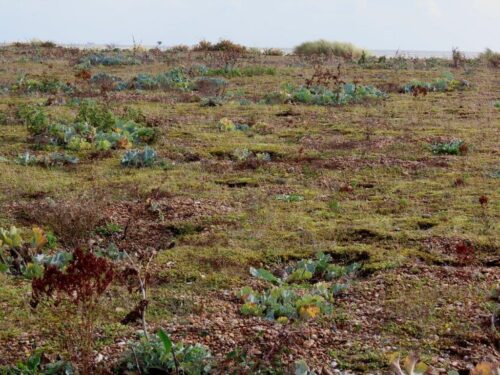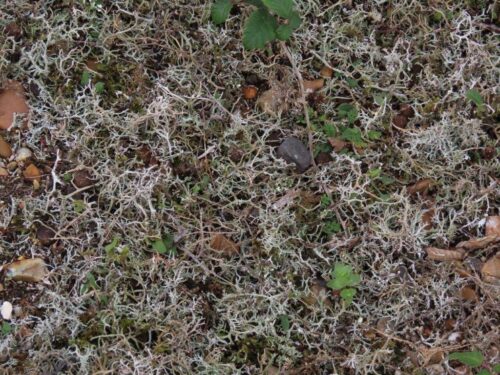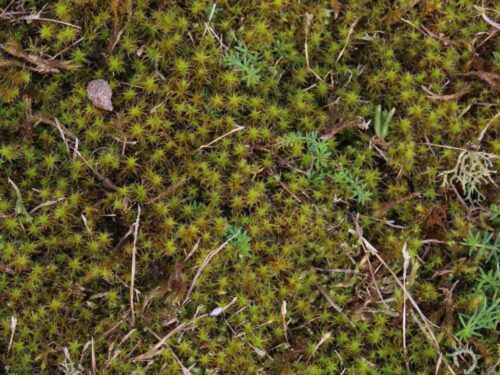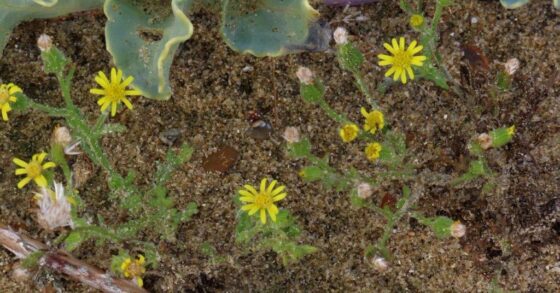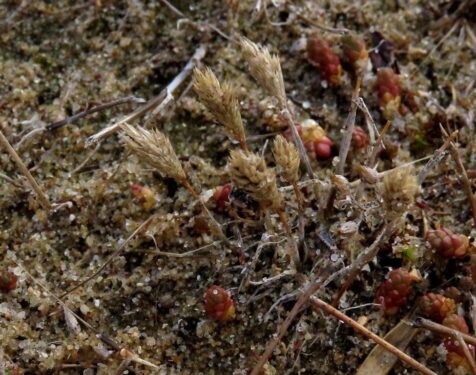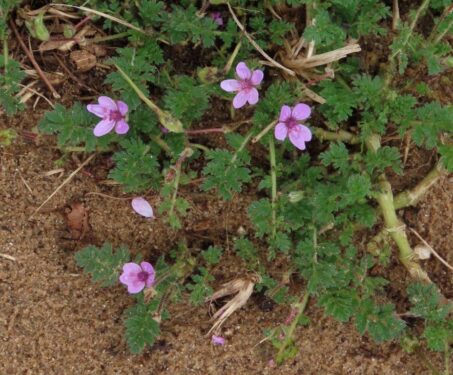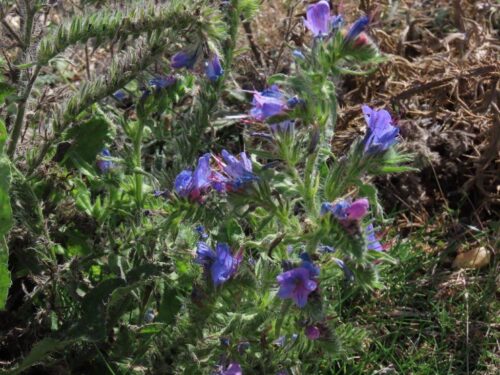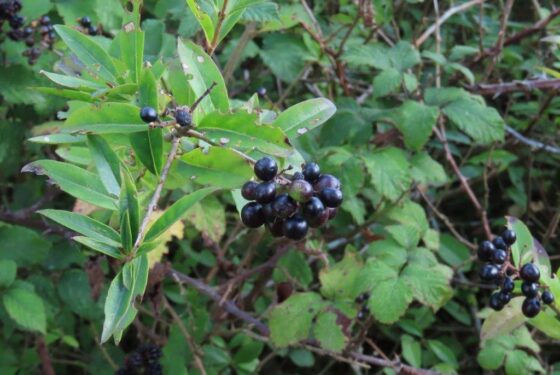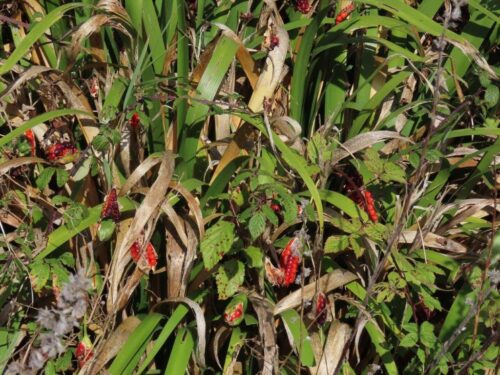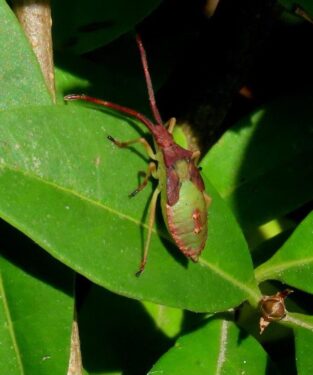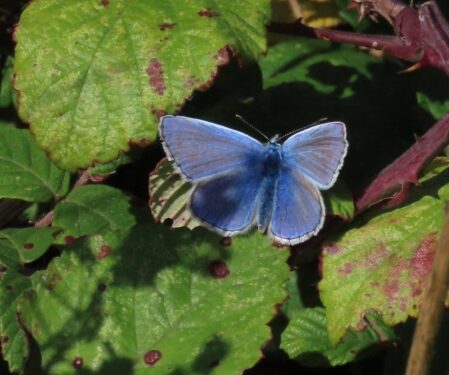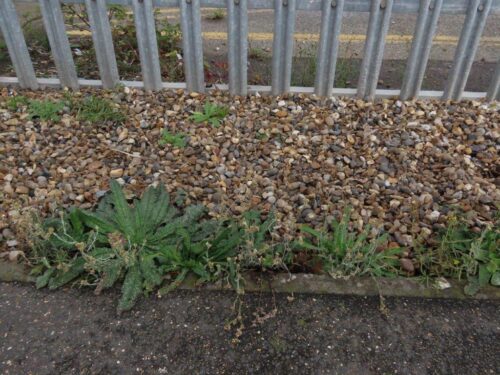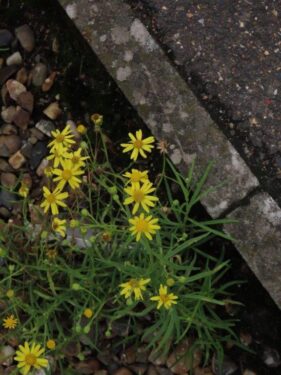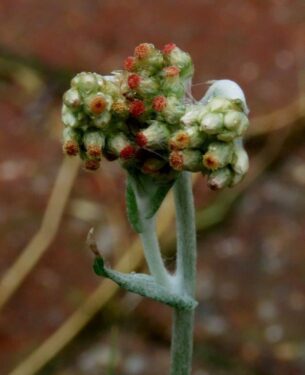Following two previous successful #WildEssex on tour events, to Harlow last year and Burnham in 2022, this time we ventured abroad (out of the county!) to Felixstowe. A different county maybe, but Essex was in sight for most of the time…
We assembled at lunchtime on the first day at the Alex, for a fine snack and a drink. We had been worried by the wet and windy weather forecast but it was warm enough to sit outside, and the sun even came out for us. Indeed the weather gods were on our side for all three days: the threatened heavy, prolonged rain came when we were indoors or asleep, and the only time we got really wet was walking home from the station at the very end.
Our first afternoon was spent examining the Felixstowe seafront and gardens. Looking out seaward gave some idea of the busyness of the shipping lanes out there, with some huge container vessels on the horizon looking more like the Manhattan skyline than anything afloat.
Large rock groynes provide an artificial rocky shore habitat, with seaweeds, limpets and other marine life. As we looked at an array of shells found on the shingle beach, a Red Admiral plonked down next to us. A very fresh individual, it was probably migrating southwards, something that has been happening en masse over the past couple of weeks.
The planting on the cliff slopes is largely Mediterranean shrubs, some still in flower, others in fruit…
Best of all for insects though, as always at this time of year, was the flowering Ivy, abuzz with Ivy Bees, Honeybees, bumblebees and hoverflies, all a rich source of food for the Garden Spiders.
The Holm Oaks were absolutely riddled with leaf-mines from the micromoth Phyllonorycter messaniella, to a greater extent than we have seen elsewhere. Although a bit unsightly, such infestations apparently don’t affect the tree significantly, and each mine contains a mini-morsel for a Blue Tit – it is good to see a non-native tree that is likely to be a big part of our future landscape garnering its own ecology, fitting it to its new home.
The geology of the cliffs, with gravels over clays, means there are springs, which have been tamed and corralled into water features, some dripping with newly formed tufa, ponds with Curled Pondweed, Watercress and Monkeyflower; pond-skaters skittering on the surface; and rocks covered with Ivy-leaved Toadflax.
Grassy slopes had Wild Clary in flower, and the lower, salt-splattered lawns were clothed in the attractive rosettes of Common Stork’s-bill and Buck’s-horn Plantain. And cracks on the promenade were colonised by Guernsey Fleabane and Water Bent, two relatively new plants in these parts, but again likely to be a big part of our future in an overheated world.
A walk along the prom, via a cuppa in the Spa Pavilion, finished the afternoon, with most then opting for dinner at the Premier Inn. But no takers for the batting option in Langer Park!
****************************************************************************************
Next day dawned dull with spots of wet in the breeze. As we headed to the north side of town on foot and by bus, a patch of Caper Spurge weaved an interesting pattern …
… and the view out to sea reflected to rather dismal weather.
Heading towards Felixstowe Ferry, we soon diverted onto vegetated shingle, an internationally important habitat type and one for which Suffolk is justifiably renowned, the realm of Sea Kale and Sea Pea, Sea Campion and Sea Beet, Sea Holly and Sea Spurge … quite a theme developing there!
Down by the saline pools there was a saltmarsh of Sea Purslane and Annual Seablite, now assuming its diverse autumn tints, but few birds apart from gulls (including a Great Black-back), Cormorants and a Little Egret.
Continuing along the seawall, past the Martello Towers, we found plenty of botanical interest, including Lucerne (purple), Sickle Medick (yellow) and Sand Lucerne, the remarkable hybrid between the two in a whole range of intermediate and extramediate hues.
White Ramping-fumitory was in good flower, and there were plenty of (soggy) seed-heads, including Hare’s-foot Clover, Rough Dog’s-tail and Bristly Ox-tongue in a veritable botanical menagerie.
Here Jude also spotted several Firebugs feeding upon Mallow seeds, a very recent arrival first found across the water around Harwich in the last five years, and Turnip Sawflies, in a similar colour palette.
Having discussed (and in some cases tasted) foods from nature on the shingle (pea, kale, holly and beet) we soon found ourselves among more edibles and flavourings, including Fennel, Duke of Argyll’s Tea-tree (goji berries), Dittander (like Horseradish), Sea Radish and, best of all, the mini taste-bombs of Crow Garlic bulbils, a revelation even to me. The Suffolk coastal paleo-diet seems an apt descriptor, except of course that many of these plants we simply not here in ‘paleo’ times!
Into Felixstowe Ferry hamlet, with Bawdsey Manor in sight, we headed into the Ferryboat for liquid refreshment, while once again the sun came out and warmed things up, before the foot ferry to Bawdsey Quay took us to a lovely picnic spot overlooking a tranquil Deben Estuary.
At our feet was a small sand dune with Sea Holly, Sea Mayweed and Marram, with a drift-line of Sea Rocket, Frosted Orache and Prickly Saltwort.
The rocket and related crucifers were being absolutely demolished by Large White butterfly caterpillars.
In the humid air, Migrant Hawker dragonflies were flying around in force, while along the woodland edge a few insects were tracked down, including Nettle-tap moth and a pair of the long-legged flies Liancalus virens. Normally associated with waterfalls and fast-flowing streams, and therefore mostly found in the western half of the country, there is one previous record on the NBN Atlas from around Ipswich, and in Essex at least there is a concentration of records from the estuarine fringes.
Juicy brambles and Alexanders seeds (like aromatic peppercorns) were added to our seaside banquet as Robins were singing their wistful autumn songs in the trees, which included several large Turkey Oaks. The Holm Oaks here had leaf-miners, but mostly the smaller galleries of Ectoedemia heringella, along with pimple-galls caused by gall-mites. Lime and Field Maple also showed mite-galls, impressively so in the case of the lime nail-galls, while Field Maple and Sycamore showed distinctive signs of fungal attack, mildew and tar-spot respectively.
But as the afternoon was progressing, it was time for the return ferry, into Winkles café for a cuppa, then the walk back, past migrant Wheatears, some Tamarisk in full bloom and a Devil’s Coach-horse with upcurled abdomen, alarmed and alarming in equal measure.
The return buses were so infrequent and the clouds so threatening that we decided to walk the whole way back along the prom (or as near as we could when diverted), to the Boardwalk Bar on the pier for rehydration purposes and sunset, the Fish Dish for a splendid meal. And for some a more leisurely return to the Boardwalk afterwards….
***************************************************************************************
A rainy breakfast time on the final day soon dried up; the sun came out but the wind rose, scuppering the plans of some of the group to take the Harwich Foot Ferry home in the afternoon. But time for a good couple of hours on Landguard Point and Common, a great vantage point to watch the incessant port activity and comings and goings of shipping, and recognize the internationally strategic value of this location, now and in the past – the reasons for the Fort and the bird observatory being there, defence and migration study respectively.
At the seaward edges of the shingle peninsula, lines of Oraches, including Babington’s, and Prickly Saltwort picked out the drift-line.
Moving inland, impressive patches of Yellow Horned-poppy, untidy but still just in flower, mingled with Sea Kale again.
Sandier patches were dominated more by Sea Spurge and Sea Holly, with a few plants of Ray’s Knotgrass, never an easy species to track down.
One the more stabilised dune- and shingle-heath shingle Heath, Reindeer ‘Mosses’ and Sandhill Screw-moss dominated large patches, with Common Stork’s-bill (in flower this time), Sticky Groundsel and Sand Cat’s-tail, plus last few flowering Viper’s-bugloss.
Despite the wind, a few birds on the Common included feeding Pied Wagtails and Meadow Pipits, with twittering Linnets in the bushes and Starlings overhead. Then to the oldest part of all, vegetation-wise, the shingle scrub with Elder and Wild Privet. In the shelter and sun, there was plenty of insect activity including a Box Bug nymph and more Common Blues than we have seen put together over the past summer…
All that was then left was to head back to the Viewpoint Café for a superb (late!) brunch, passing Narrow-leaved Ragwort and Jersey Cudweed on the way, more new plants potentially brought in by the port trade.
And after a great three days, time for fond farewells, all without getting seriously wet: WildEssex 1, Met Office 0! Thanks to all who helped make it such fun!!
